Updated September 7th 2021: This blog is updated with the the latest guide on OpenEBS Local PV, please refer to https://github.com/openebs/dynamic-localpv-provisioner.
How to run the ElasticSearch operator (ECK) using OpenEBS LocalPV auto-provisioned disks.
In the previous blog, we discussed the advantages of using OpenEBS LocalPV with the new operator for ElasticSearch, ECK. In this blog article, we will give step-by-step instructions to get started with deploying ElasticSearch, connecting it to MayaData DirectorOnline for free monitoring and scaling up the ElasticSearch cluster with auto-provisioning of the disks.
.png?width=2400&name=Untitled%20design%20(12).png)
Prepare your cluster for monitoring
OpenEBS Director gives a free forever tier for Kubernetes visibility (monitoring, logging and topology views). Start your Kubernetes visibility journey by connecting your Kubernetes to OpenEBS Director. Example steps are shown below.
1. Sign in using GitHub or Google or username/password
2. Choose the location of your cluster and try to connect
3. You will be offered a command that you need to run on your Kubernetes shell for auto-connecting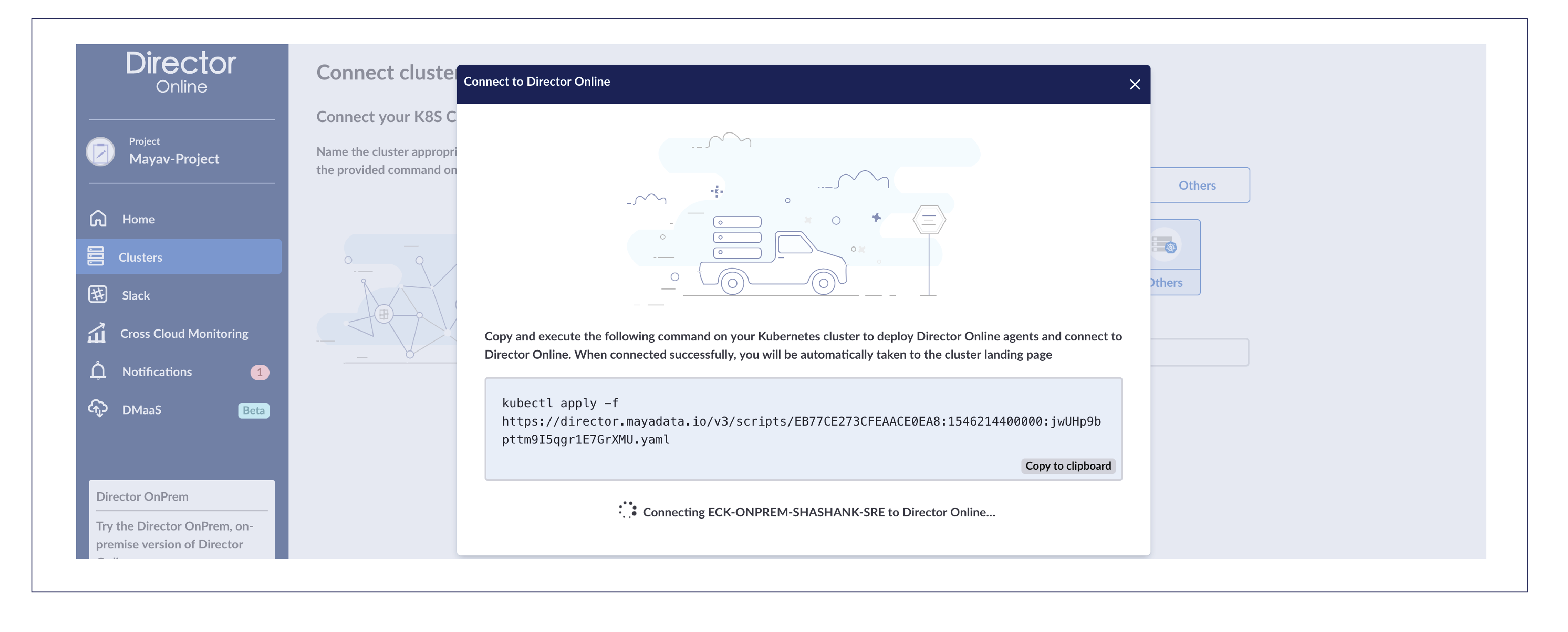
root@openebs-ci-master:~# kubectl apply -f https://director.mayadata.io/v3/scripts/EB77CE273CFEAACE0EA8:1546214400000:jwUHp9bpttm9I5qgr1E7GrXMU.yaml
namespace/maya-system created
limitrange/maya-system-limit-range created
serviceaccount/maya-io created
clusterrolebinding.rbac.authorization.k8s.io/maya-io created
secret/maya-credentials-aaca9c75 created
job.batch/cluster-register created
daemonset.extensions/maya-io-agent created
deployment.apps/status-agent created
deployment.apps/kube-state-metrics created
service/kube-state-metrics created
configmap/fluentd-forwarder created
configmap/fluentd-aggregator created
deployment.apps/fluentd-aggregator created
service/fluentd-aggregator created
daemonset.apps/fluentd-forwarder created
configmap/cortex-agent-config created
deployment.extensions/cortex-agent created
service/cortex-agent-service created
deployment.apps/weave-scope-app created
service/weave-scope-app created
daemonset.extensions/weave-scope-agent created
deployment.apps/upgrade-controller created
root@openebs-ci-master:~#
4. Once the command is executed, your cluster is connected and existing applications are displayed if any are discovered.
Install OpenEBS
Choose the default installation mode of OpenEBS. Run the following command as Kubernetes admin.
helm install --namespace openebs --name openebs stable/openebs --version 1.1.0Disk Pre-requisites
OpenEBS LocalPV provisioning requires the disks to be available on the nodes on which the ElasticSearch data pods are going to be scheduled. If more than one disk is available, OpenEBS LocalPV provisioner chooses the appropriate disk based on the requested size. So, the pre-requisite is to have at least one free disk (not mounted) on the node.
As seen on Kubernetes shell:
root@openebs-ci-master:~# kubectl get bd -n openebs -o wide
NAME SIZE CLAIMSTATE STATUS AGE
blockdevice-3735b49b888bbf54406240a44aa7ed55 107374182400 Unclaimed Active 22h
blockdevice-b63e2e62040513698454d33818a5f630 107374182400 Unclaimed Active 22h
blockdevice-c2eb81ef31f4ca8cb1885aee675c23d0 107374182400 Unclaimed Active 22h
blockdevice-c3e24a19d11dd5ee1478c7bd8bf1ebdc 107374182400 Unclaimed Active 22h
blockdevice-e4faa44472434b2f8c3e0ef9533d3032 107374182400 Unclaimed Active 22h
blockdevice-ff5e6f96801909b8a572bc92a5e5c11c 107374182400 Unclaimed Active 22hAs seen on OpenEBS Director (Cluster -> Topology -> Hosts)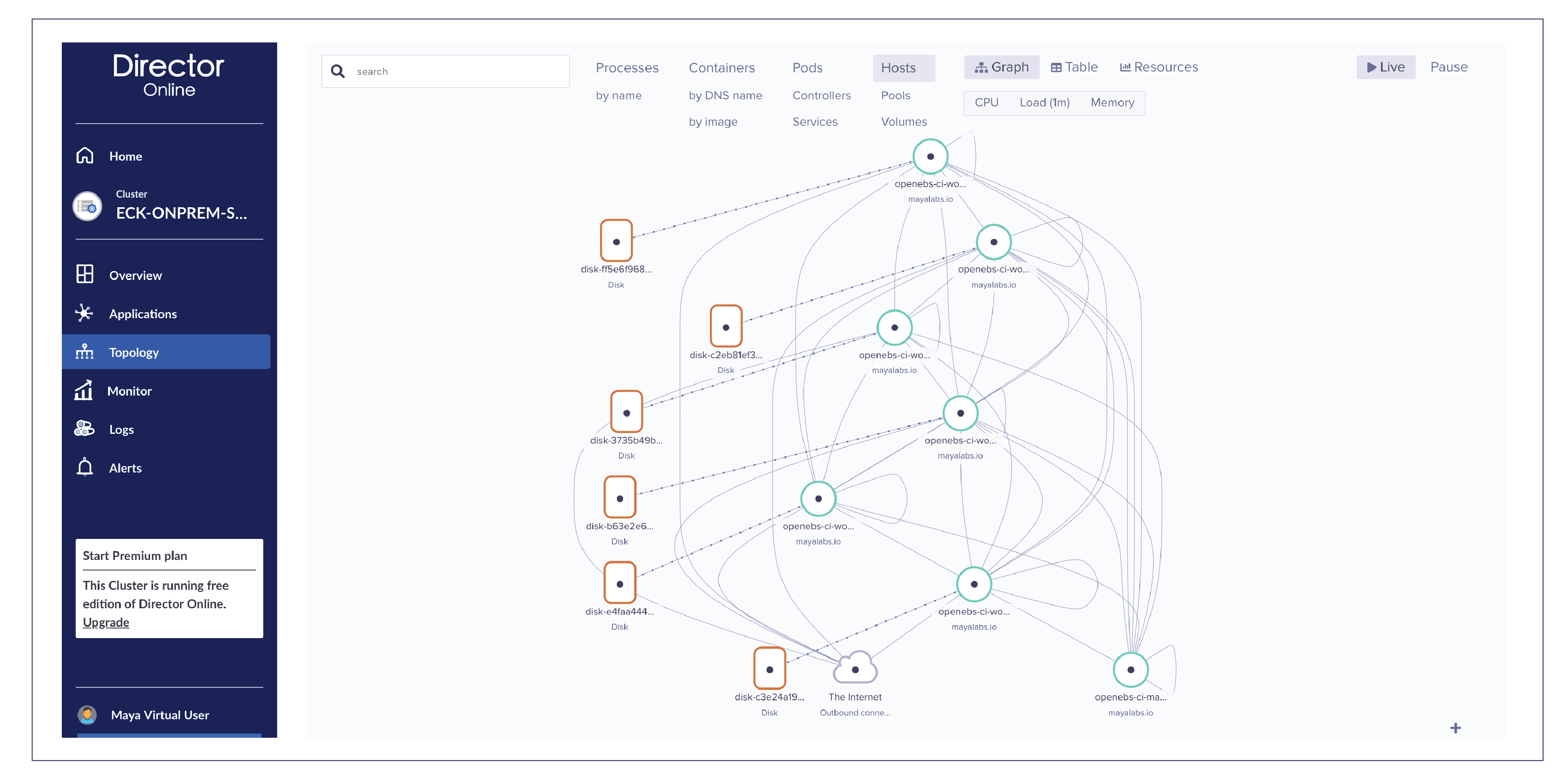
There are six worker nodes with an unclaimed disk on each node.
Each of them is unclaimed as seen below: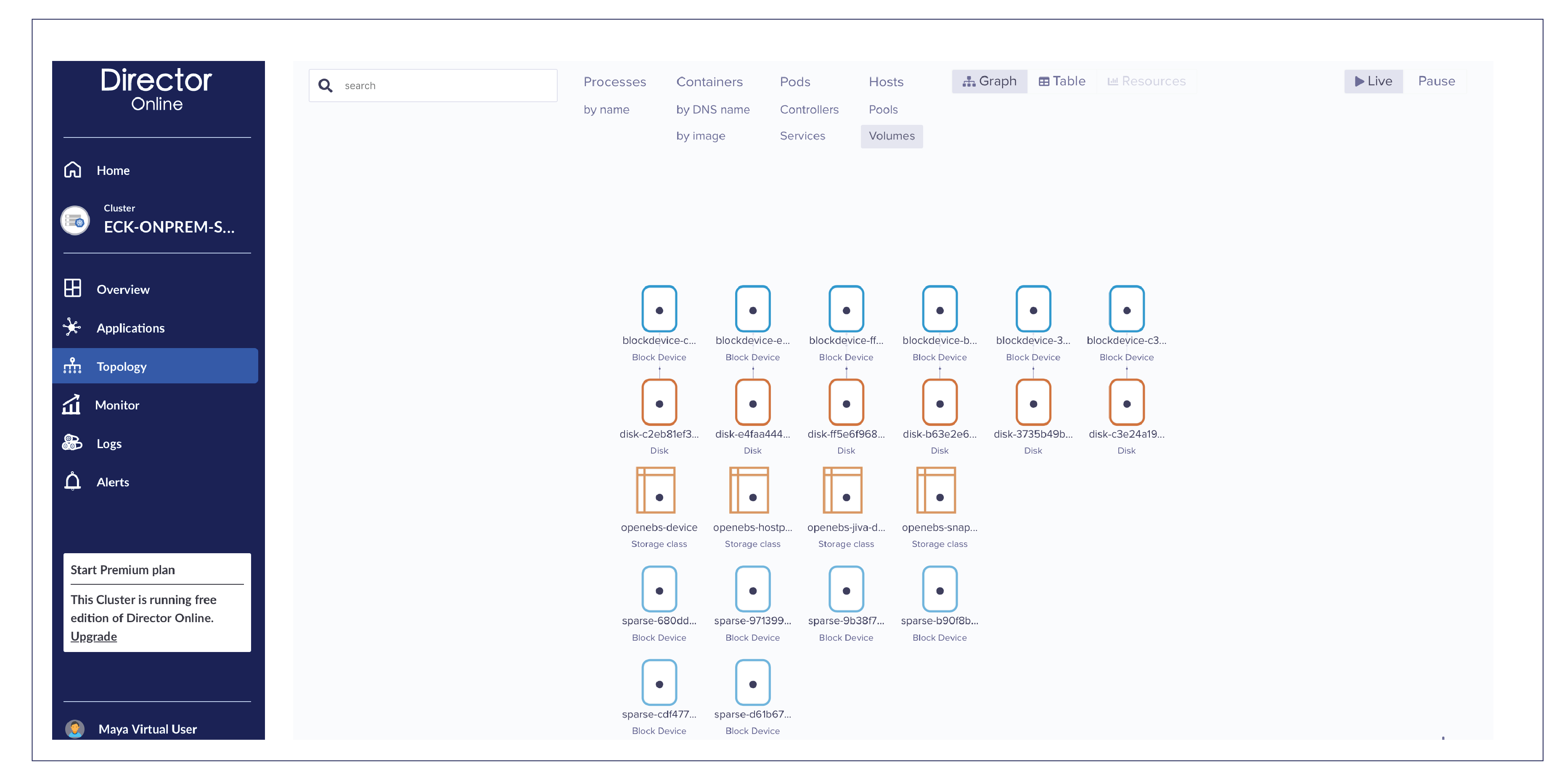
Prepare OpenEBS LocalPV StorageClass to be used in your ECK operator
Create a LocalPV storageClass on your Kubernetes
cat <<EOF | kubectl apply -f -
apiVersion: storage.k8s.io/v1
kind: StorageClass
metadata:
name: elastic-openebs-localpv-sc
annotations:
openebs.io/cas-type: local
cas.openebs.io/config: |
- name: StorageType
value: "device"
- name: FSType
value: ext4
provisioner: openebs.io/local
volumeBindingMode: WaitForFirstConsumer
reclaimPolicy: Delete
EOF
Note: You can also use OpenEBS LocalPV in hostpath mode if you are sharing the underlying disk with other applications.
You need to append or use this StorageClass elastic-openebs-localpv-sc in the ECK operator as shown later in this blog.
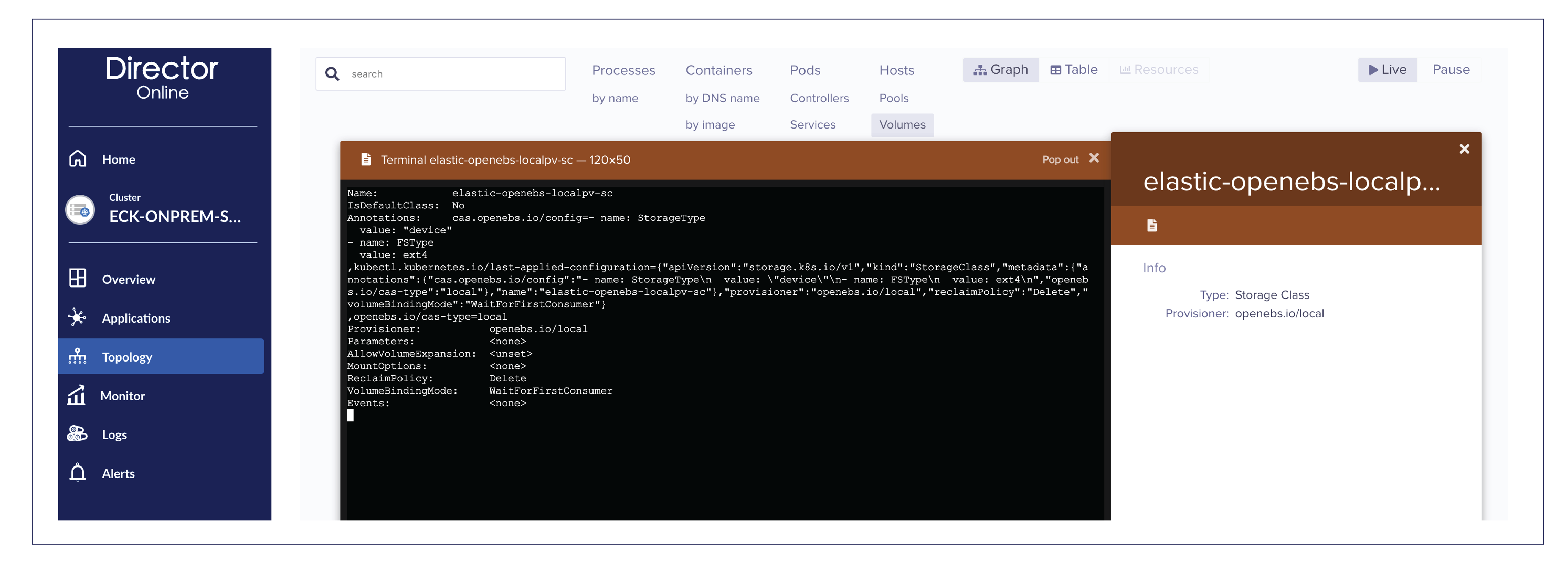
Get Started with the ECK Operator
First, install the CRDs and the operator itself.
(https://www.elastic.co/guide/en/cloud-on-k8s/current/k8s-quickstart.html#k8s-deploy-elasticsearch)
kubectl apply -f https://download.elastic.co/downloads/eck/0.9.0/all-in-one.yaml
Verify if the elastic-operator is running
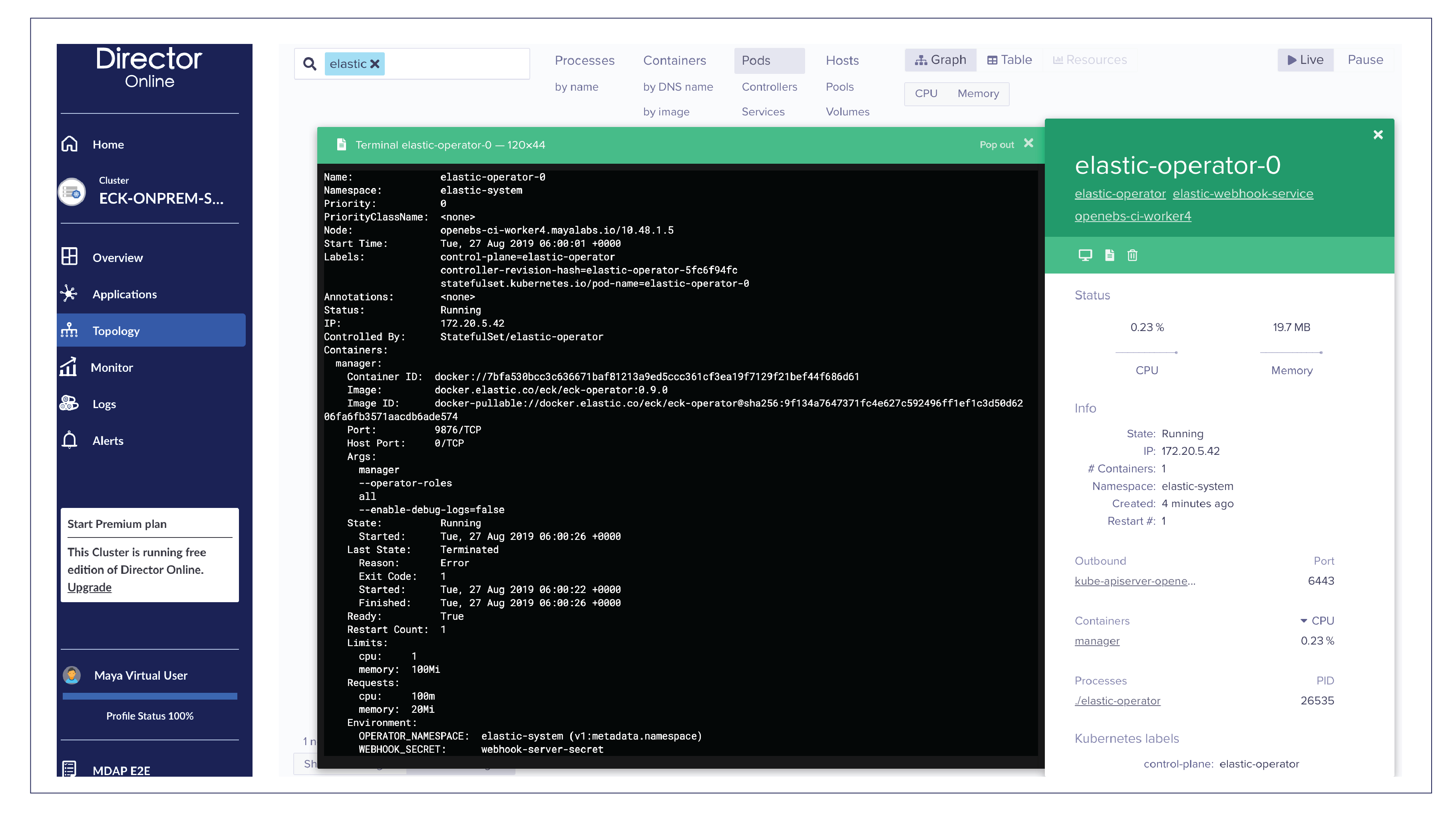
Start ElasticSearch using ECK with OpenEBS LocalPV storage class
cat <<EOF | kubectl apply -f -
apiVersion: elasticsearch.k8s.elastic.co/v1alpha1
kind: Elasticsearch
metadata:
name: openebs-ci-elastic
spec:
version: 7.2.0
nodes:
- nodeCount: 3
config:
node.master: true
node.data: true
node.ingest: true
volumeClaimTemplates:
- metadata:
name: elasticsearch-data # note: elasticsearch-data must be the name of the Elasticsearch volume
spec:
accessModes:
- ReadWriteOnce
resources:
requests:
storage: 90Gi
storageClassName: elastic-openebs-localpv-sc
EOF
Note: Storage specific configurations include only storage size and StorageClass name
storage: 90GistorageClassName:elastic-openebs-localpv-sc
Verifying ElasticSearch
kubectl get elastic
NAME HEALTH NODES VERSION PHASE AGE
elasticsearch.elasticsearch.k8s.elastic.co/openebs-ci-elastic green 3 7.2.0 Operational 106s
We have used NodeCount as 3. On the three Kubernetes worker nodes, OpenEBS LocalPV provisioner would have mounted the matching disks as required for each ElasticSearch Data Node.
Application+PVC view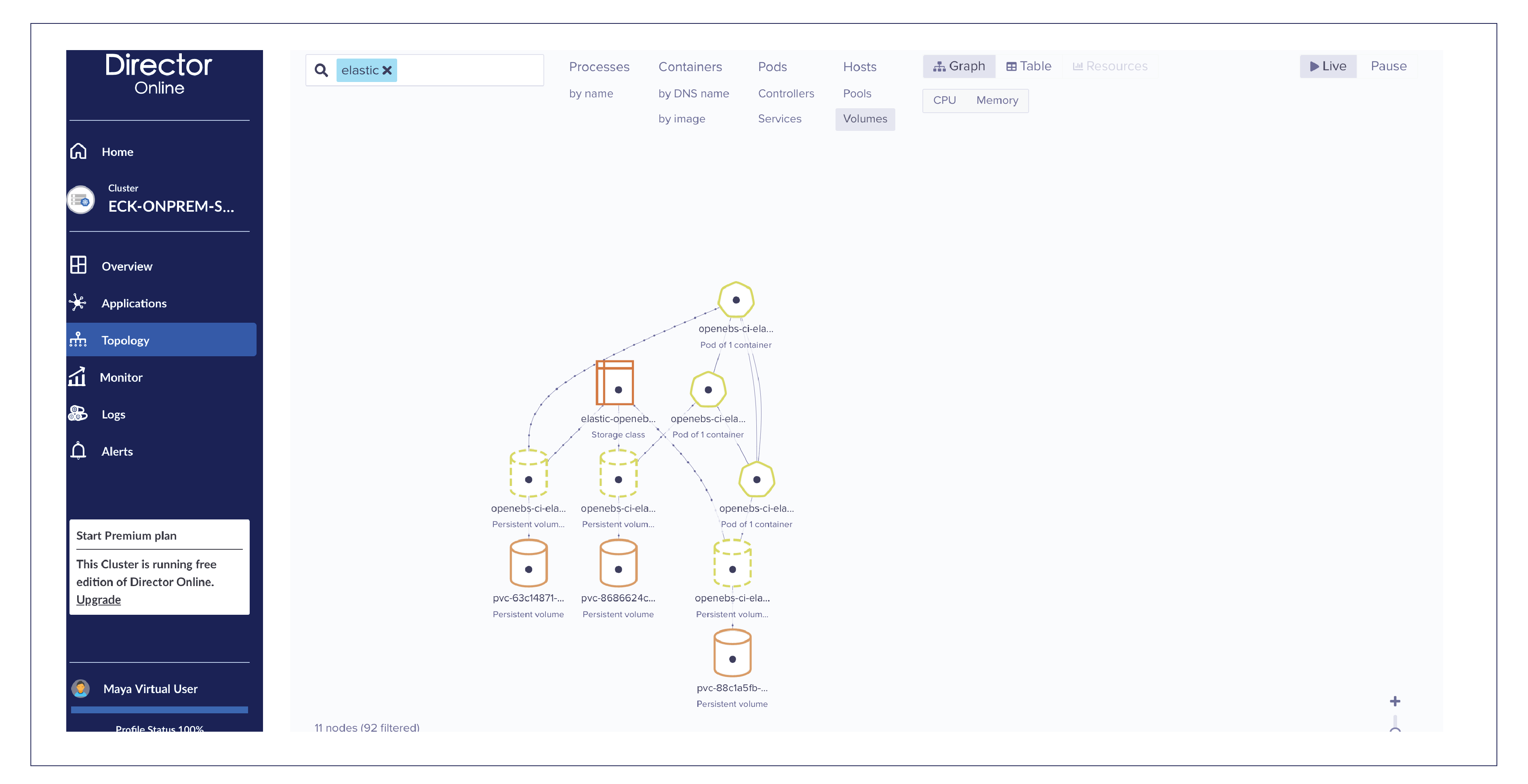
Disk / Block Device (BD) / Block Device Claim (BDC) view
The three disks are automatically claimed and attached to PVC by the OpenEBS LocalPV provisioner.
Scaling up ElasticSearch
It is done easily by changing the nodeCount in the ElasticSearch CR spec.
root@openebs-ci-master:~# kubectl edit elasticsearch openebs-ci-elastic- -
nodes:
- config:
node.data: true
node.ingest: true
node.master: true
nodeCount: 3
podTemplate:
metadata:
creationTimestamp: null
spec:
containers: null
volumeClaimTemplates:
- metadata:
creationTimestamp: null
name: elasticsearch-data
Change the nodeCount to 4.
Save it.
And Elastic operator now scales the cluster to 4 nodes.
Verifying scaled up setup
Verify if the ElasticSearch cluster has 4th node and LocalPV is auto-provisioned
root@openebs-ci-master:~# kubectl get elastic
NAME HEALTH NODES VERSION PHASE AGE
elasticsearch.elasticsearch.k8s.elastic.co/openebs-ci-elastic green 4 7.2.0 Operational 13mApplication view
PVC/BD/BDC view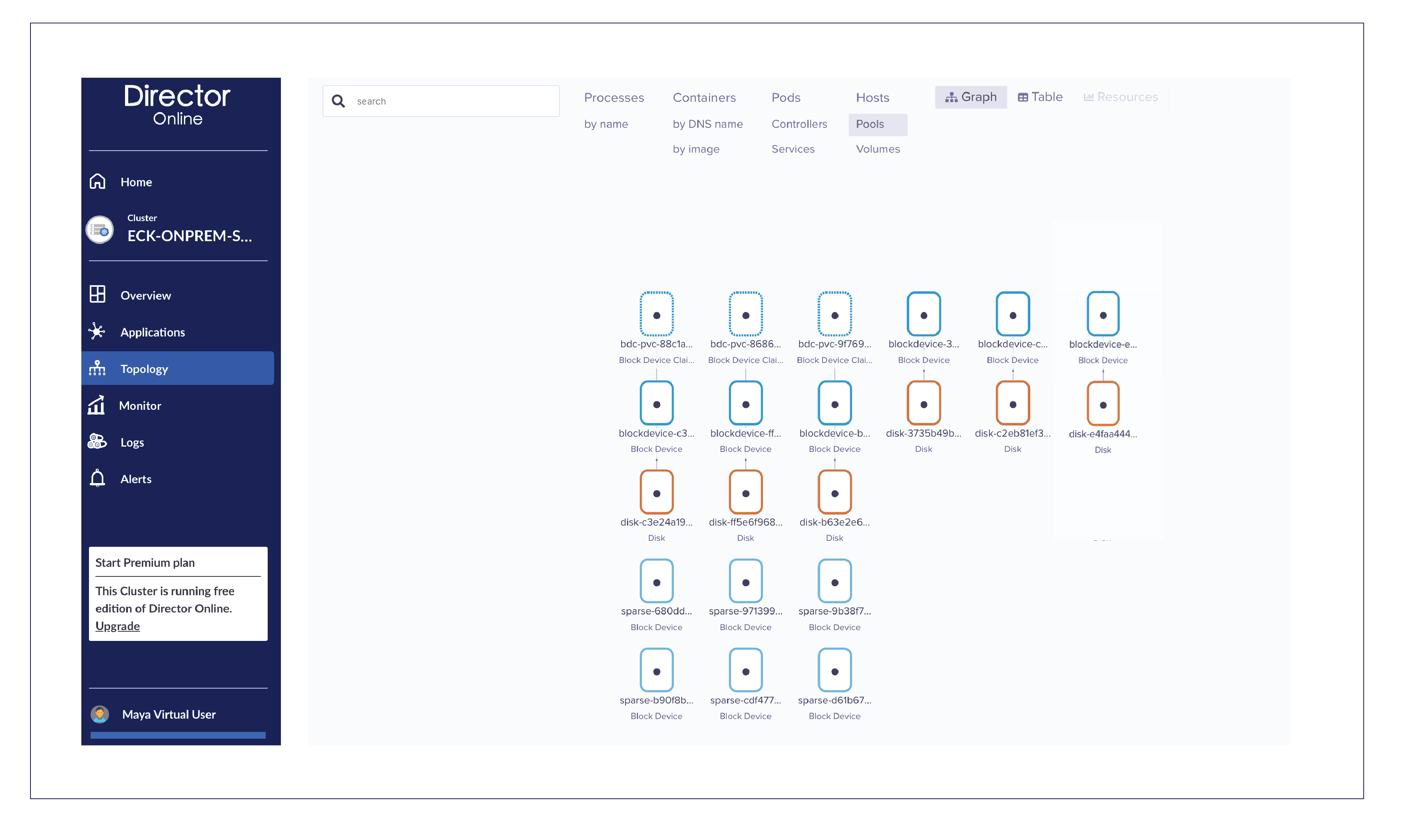 Summary:
Summary:
We have demonstrated the following
- The new Elastic operator is the most simple way to manage ElasticSearch clusters
- Using OpenEBS LocalPV StorageClass, it is most simple to auto-provision and auto-scale the nodes with OpenEBS doing the provisioning logic behind the scene.
OpenEBS also provides the following additional services for LocalPV and ElasticSearch:
- Monitoring of disks health and usage parameters from the Director console
- Monitoring of ElasticSearch performance and status from the Director console
Getting Help:
Getting help for managing OpenEBS and ElasticSearch monitoring is easy. Sign up for free at OpenEBS Director and/or join our amazing slack community.Authors:
1. Shashank Ranjan
SRE, Data Operations
MayaData Inc
Twitter handle: @shashankranjan9
2. Uma Mukkara
COO
MayaData Inc
Twitter handle: @uma_mukkara

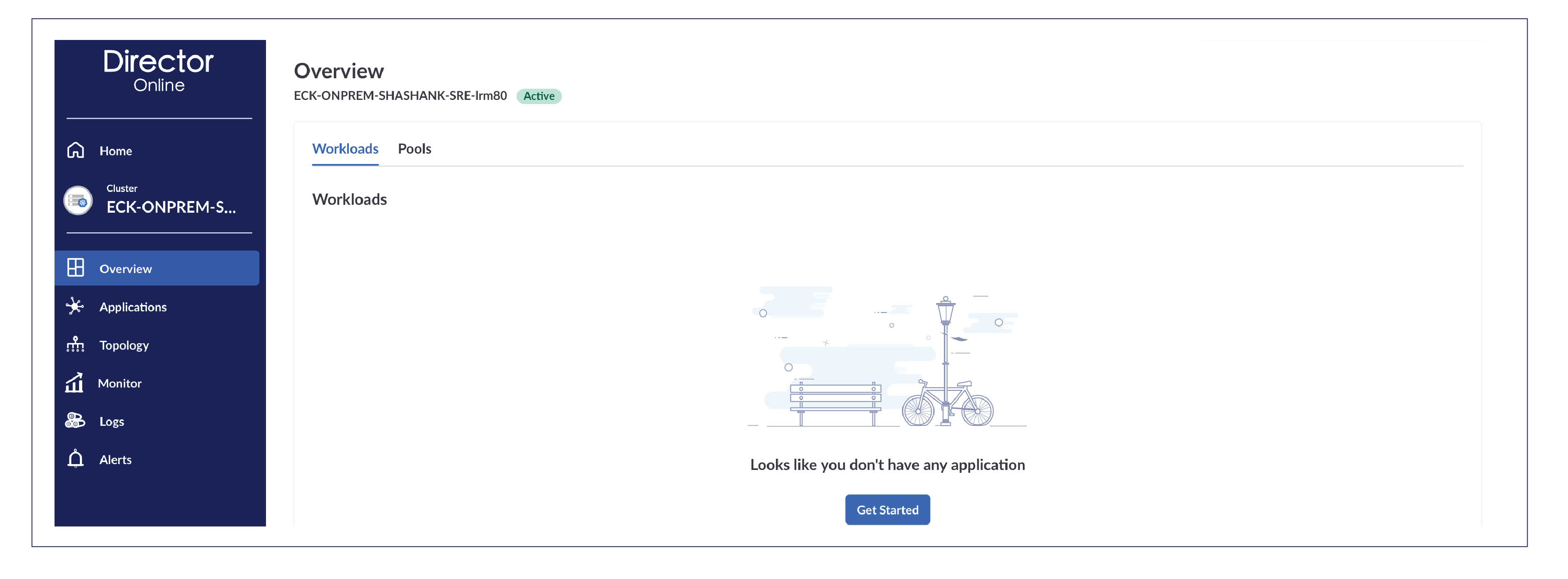





Game changer in Container and Storage Paradigm- MayaData gets acquired by DataCore Software
Don Williams
Don Williams
Managing Ephemeral Storage on Kubernetes with OpenEBS
Kiran Mova
Kiran Mova
Understanding Persistent Volumes and PVCs in Kubernetes & OpenEBS
Murat Karslioglu
Murat Karslioglu